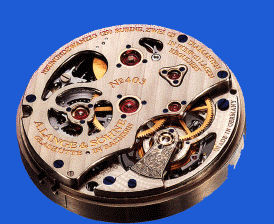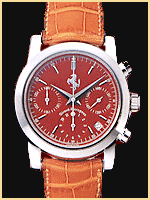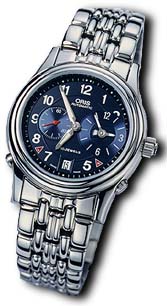
I picked this passion for mechanical timepieces when a Jurgen Heinz Jumping Hour watch in a steel case caught my eye while shopping with my wife. The watch sported a very common ETA 2892 movement modified by the very young designer Jurgen Heinz. The watch was made in Germany.
Although I was attracted to the watch, the careful buyer in me urged me to do the research before buying. Intrigued by the mystique of mechanical watches, my journey began. I read countless books, visited countless libraries, surfed many hours researching the net.
I talked to many watch nuts, exchanged email with them, ask questions in the forums. I "tortured" many salespeople in the numerous watch shops around Singapore...and this tiny country had many. I had become a watch nut. I could never pass a watchshop display without spending at least 5 minutes looking through what they have to offer.
I looked at almost every conceivable watch made...After looking at Audemars Piguet's Royal Oak, I turned my attention to Patek Phillipe's 3919, 5015 and 5035. Both houses produced excellent watches. And I could have been happy with any in their collection. But I journeyed on.
From certain quarters within the internet, there was quite a storm brewing about the old name of A. Lange & Sohne of Glasshutte. I went to take a look at the expensive range, and I was immediately attracted to the range of 5 hand would mechanical watches. Lange Uhren had recently begun production of very exquisite watches under the name of A. Lange & Sohne. It was a revived traditional German watchmaking company headquartered in Glasshutte, ravaged by Germany split into two after the second world war.
| Here is a picture of the top of the line movement used in the Pour La Merite Tourbillion. Apart from the tourbillion, this movement uses a fusee in chain method to transfer constant power from the mainspring barrel to the escape. This is a landmark use of the fusee in chain in a wristwatch. All previous uses of the fusee in chain was only available in much larger pocket watches. This complication has never been attempted before because of the complexity of platenatary gearing which allows the mainspring to be rewound while transferring power to the escape. | 
|
Some 6 months into the journey, I bought my first serious mechanical watch. It was the Girard-Perregaux Pour Ferrari pictured here:

This was a truibute from GP for the famous car maker Ferrari. Finished in very classical lines, with good attention to detail, and sporting an in-house movement, it was as good a start as any.
Mine is in steel, with a black leather strap, silver dial, gold bar hour markers, gold hands. Originally, the watch was thought as one which uses a GP inhouse movement caliber 3100 (27 jewels, 26.2 mm, 2.98 mm, 50 hour power researve), with a GP chronograph module at the bottom (adding 30 jewels to the count). However, GP shrouds the origins of the base movement with great secrecy, but eventually, the truth was out. The base caliber of the GP Ferrari Chrono is the ETA 2892, refinished by GP, with a Dubois-Depraz chronograph module attached. The GP F50 perpetual calendar, however, uses the GP3100 as the base movement.
It was available with the dial in many colors: red, yellow, blue, black, white and silver. It came in steel case, in rose gold, white gold. In leather strap of matching color to the dial, or in a magnificient bracelet.

| I recently bought the new Oris Worldtimer shown here. The Worldtimer is a dual timezone watch which is capable of showing 2 timezones simultaneously. The movement is Oris Cal. 690 which is a reworked ETA 2836-2. 25.6mm diameter, 30 jewels, 28000 bph, 38 hr power reserve. Here are the other travel watches I considered. |

